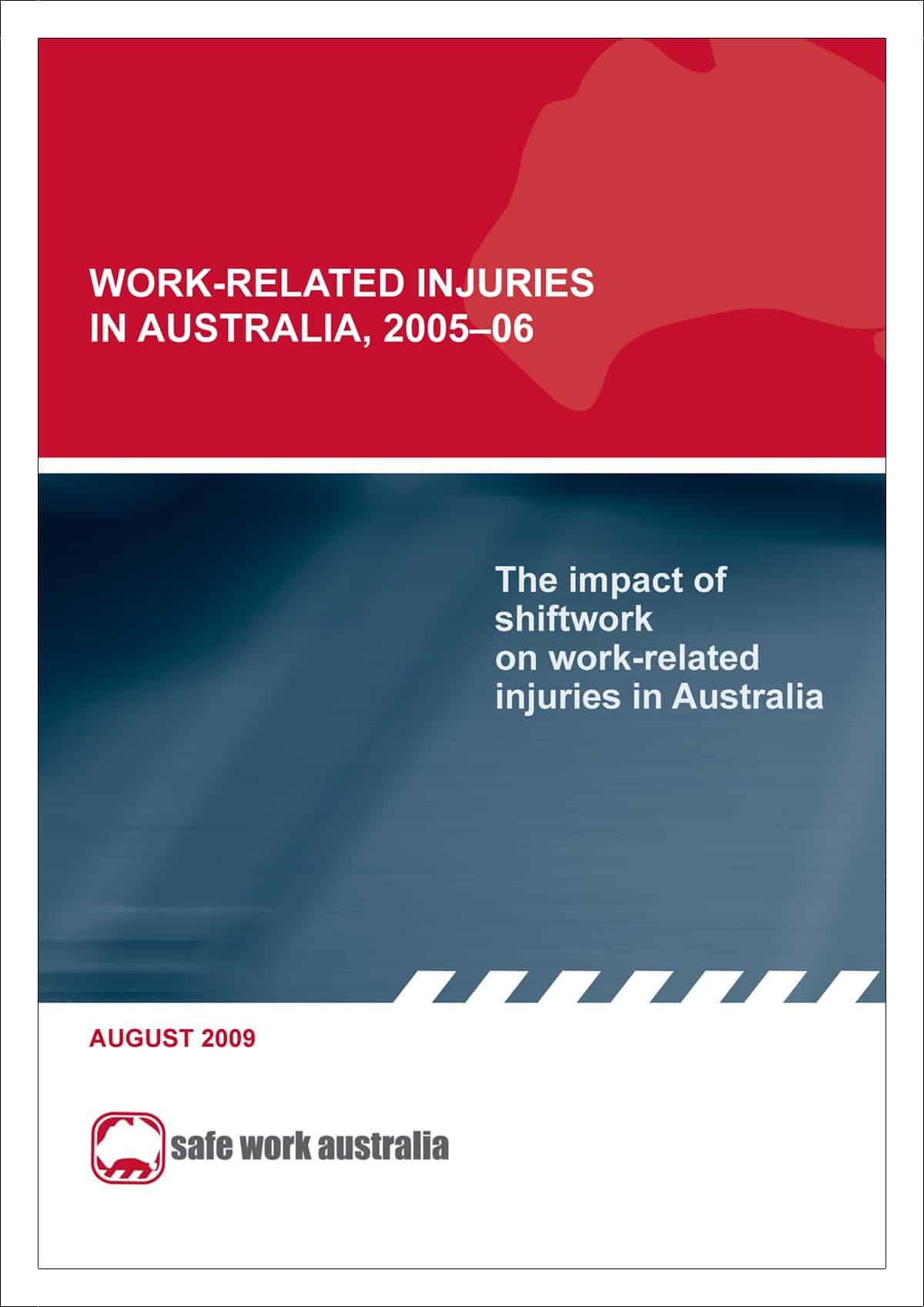Safe Work Australia has released four statistical reports into worker health in Australia. These are important and useful reports that will assist many companies and safety professionals to better address workplace hazards.
 The last of the four statistical reports looks at shiftwork.
The last of the four statistical reports looks at shiftwork.
The impact of shiftwork on work-related injuries in Australia
The main findings of this report are summarised below:
- In 2005–06, 16% of Australian workers worked under shift arrangements yet they had 27% of the work-related injuries.
- Shiftworkers had higher rates of work-related injury than non-shiftworkers.
- Incidence rates
- Shiftworkers: 114 injuries per 1000 shiftworkers
- Non-shiftworkers: 60 injuries per 1000 non-shiftworkers
- Frequency rates
- Shiftworkers: 69 injuries per million hours worked
- Non-shiftworkers: 35 injuries per million hours worked
- Female shiftworkers had higher frequency rates of work-related injury than male shiftworkers. This finding is counter to the rates of work-related injury in male and female non-shiftworkers.
- Shiftworkers
- Female: 81 injuries per million hours worked
- Male: 62 injuries per million hours worked
- Non-shiftworkers
- Female: 31 injuries per million hours worked
- Male: 37 injuries per million hours worked
- Female shiftworkers were particularly at risk of work-related injuries in Clerical, sales and service occupations, while male shiftworkers were particularly at risk in Labourer and related worker occupations.
- Both shiftworkers and non-shiftworkers were more likely to incur work-related injuries during their first six months of employment than after their first six months of employment. Furthermore, a greater proportion of injuries that occurred to shiftworkers occurred in the first 6 months of employment than occurred to non-shiftworkers in the same initial period of employment.
- The frequency rate of work-related injuries that occurred to shiftworkers is negatively related to normal working hours: Shiftworkers that worked only a few shifts per week had considerably higher frequency rates of work-related injury compared to shiftworkers (and non-shiftworkers) whose normal working hours were between 35 and 40 hours per week.
- Shiftworkers who worked less than 30 hours per week were typically young (less than 25 years old) and large proportions worked in Elementary clerical, sales and service worker, Intermediate clerical, sales and service and Labourer and related worker occupations.
- High incidence rates of injury were not due to lack of Occupational Health and Safety (OHS) training. More shiftworkers received OHS training than not, and a greater proportion of shiftworkers received OHS training than non-shiftworkers.

Related article on ABC online: http://www.abc.net.au/news/stories/2009/09/02/2673945.htm